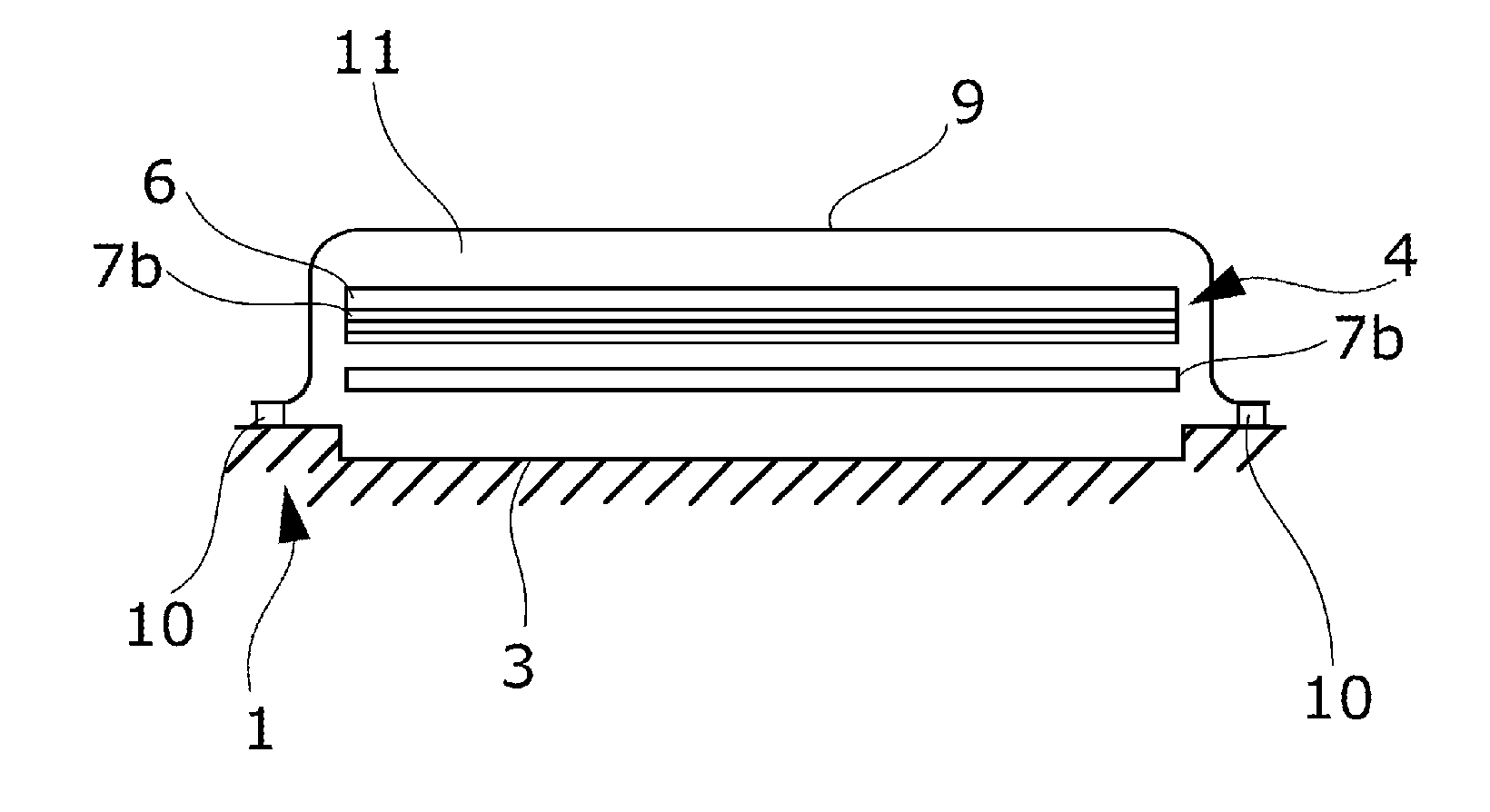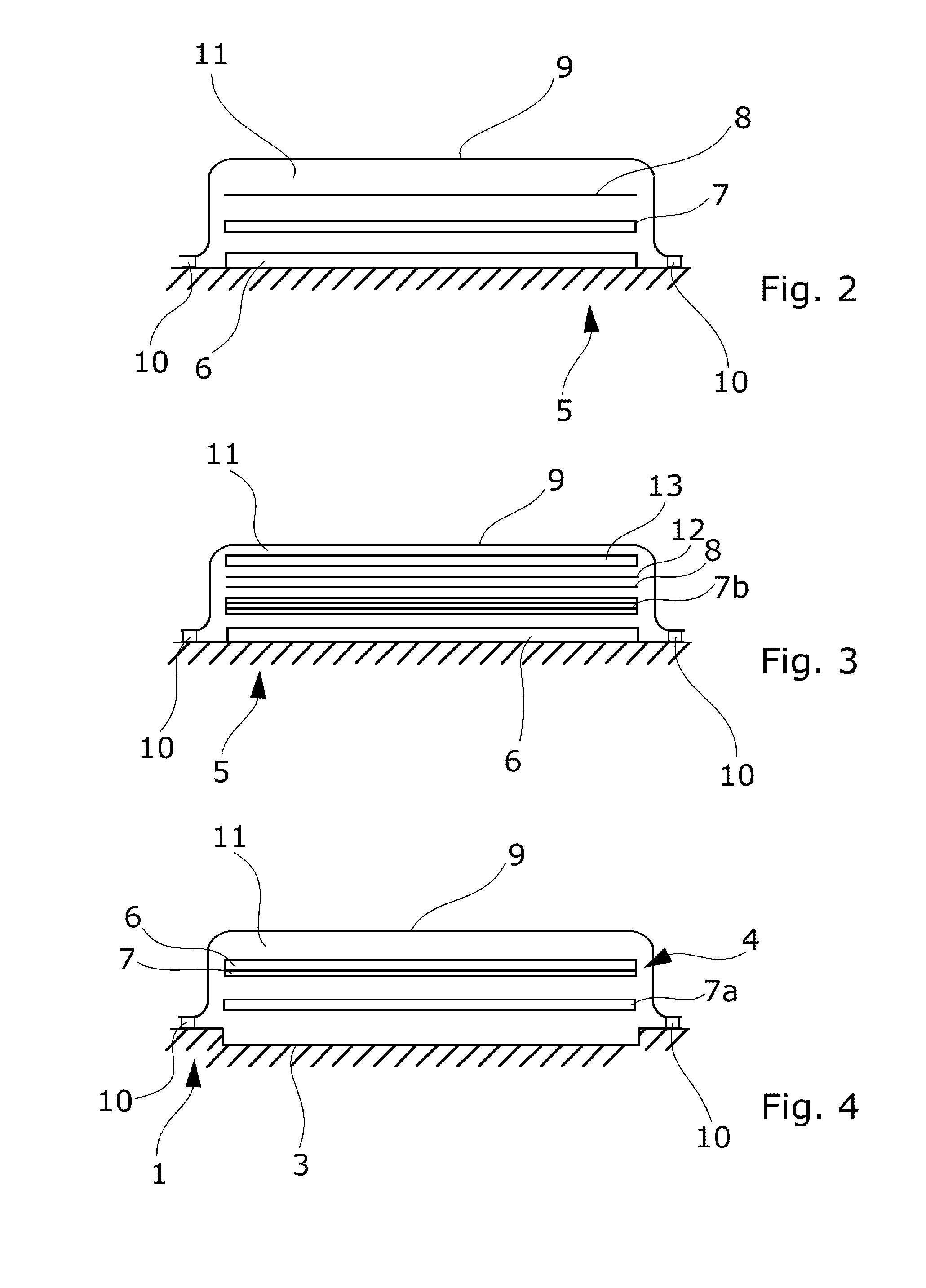Method of repairing a fibre composite solid member
a fibre composite solid member and fibre composite technology, applied in the direction of lamination, layered products, etc., can solve the problems of difficult repair process, few spare moulds, and occasional damage to moulds, so as to achieve shorter maintenance downtime and repair more efficiently
- Summary
- Abstract
- Description
- Claims
- Application Information
AI Technical Summary
Benefits of technology
Problems solved by technology
Method used
Image
Examples
Embodiment Construction
[0049]FIG. 1 shows schematically the overall idea of repairing a fibre composite solid member 1 having a locally deteriorated surface area 2; see FIG. 1a. The solid member could e.g. be a mould used in the manufacture of wind turbine blades or it could be a wind turbine blade. The deteriorated surface area 2 may e.g. have cracks or creases due to accidental impact. The repair typically only takes place in the outer finish layer which is not load-carrying. If the solid member 1 is a mould, the defects could also be due to small parts being torn off when a wind turbine blade is removed from the mould after manufacturing. FIG. 1b illustrates that a recess 3 has been made in the surface section comprising the locally deteriorated surface area 2. The recess 3 has a predefined depth and circumferential shape matching a repair patch 4 to be placed in the recess 3 in replacement of the removed material. FIG. 1c shows schematically a repaired surface section where the repair patch 4 has been...
PUM
| Property | Measurement | Unit |
|---|---|---|
| depth | aaaaa | aaaaa |
| depth | aaaaa | aaaaa |
| depth | aaaaa | aaaaa |
Abstract
Description
Claims
Application Information
 Login to View More
Login to View More - R&D
- Intellectual Property
- Life Sciences
- Materials
- Tech Scout
- Unparalleled Data Quality
- Higher Quality Content
- 60% Fewer Hallucinations
Browse by: Latest US Patents, China's latest patents, Technical Efficacy Thesaurus, Application Domain, Technology Topic, Popular Technical Reports.
© 2025 PatSnap. All rights reserved.Legal|Privacy policy|Modern Slavery Act Transparency Statement|Sitemap|About US| Contact US: help@patsnap.com



